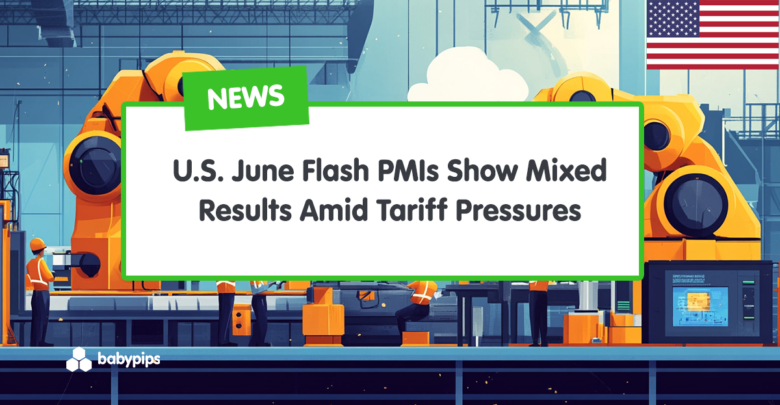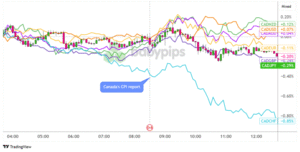S&P Global’s flash PMIs showed that U.S. business activity kept growing in June but lost a bit of steam, with the composite PMI dipping to 52.8 from 53.0 in May.
It’s still above that all-important 50 line, but the pace of growth is slower than what we saw in late 2024 and is now at a two-month low.
- Flash Manufacturing PMI for June: 52.0 (52.0 previous)
- Flash Services PMI for June: 53.1 (53.7 previous, 2-month low)
- Flash Composite PMI for June: 52.8 (53.0 previous, 2-month low)
If you’re not familiar with PMI, check out our guide to Purchasing Managers Index (PMI) in our Forexpedia to learn more.
On the bright side, manufacturing held its ground. The index stuck at 52.0 when markets were bracing for a drop to 51.0. Factory output ticked higher for the first time since February, coming in at 51.5 as firms ramped up production to build inventories. Companies stocked up on inputs at the fastest pace in over three years, likely bracing for more tariff fallout.
Services cooled a bit, slipping to 53.1 from 53.7, though that’s still a hair above forecasts. What hurt was a sharp drop in export orders. Services saw their biggest quarterly contraction since late 2022, with falling exports dragging on overall growth.
Link to S&P Global U.S. Flash PMIs for June 2025
A more notable development came from rising price pressures across the board. Manufacturing input costs jumped to the highest level since July 2022, with nearly two-thirds of producers citing tariffs as the cause. Services prices climbed as well, largely tied to tariff-driven increases in input costs like food, but the pace of gains slowed as firms competed on pricing.
Hiring was one of the few bright spots. Companies were busy playing catch-up with rising workloads, and backlogs climbed at the fastest pace in over three years. That led to the biggest jump in hiring in a year. Manufacturing posted a 12-month high in job growth, while services hit a five-month peak in new hires.
The inflation surge from tariffs reinforces Fed caution on rate cuts. As S&P Global’s Williamson noted, the data “corroborate speculation that the Fed will remain on hold for some time to both gauge the economy’s resilience and how long this current bout of inflation lasts.”
Market Reactions
U.S. dollar vs. Major Currencies: 5-min
The U.S. dollar, which had begun declining shortly before the start of the U.S. session, extended its losses after the PMI releases, despite the mixed but generally in-line data supporting the Fed’s more measured approach to further rate cuts.
The Greenback was briefly supported around the London session close, but soon returned to its intraday downswings as Iran attacked U.S. military bases and allies, adding geopolitical uncertainty to the mix.
The dollar ended the day broadly lower, with the biggest losses seen against European currencies EUR and GBP, and the smallest losses against CAD and JPY.










